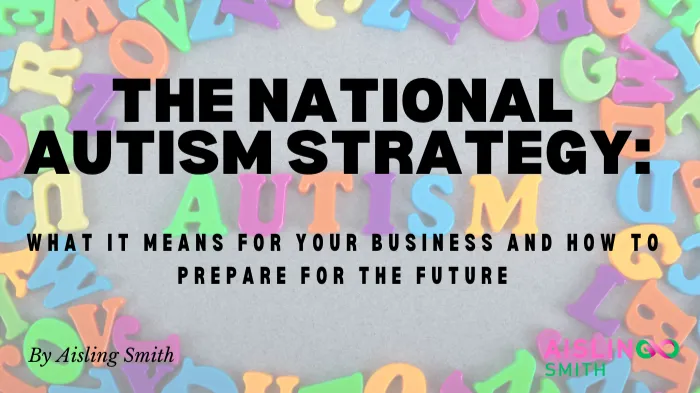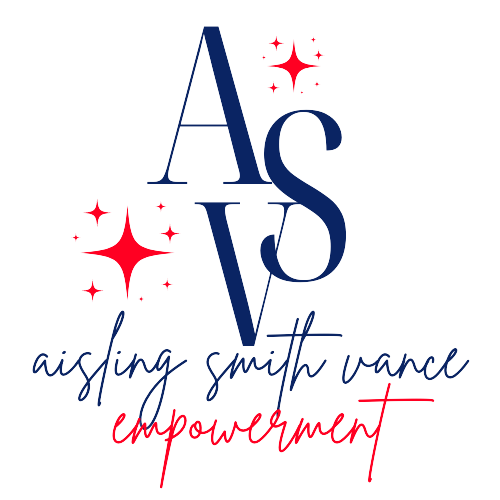BLOG

The National Autism Strategy: What It Means for Your Business and How to Prepare for the Future
Introduction:
The recent release of Australia’s National Autism Strategy (2025-2031) marks a historic and transformational step towards building a more inclusive society for Autistic individuals.
For businesses, this strategy is not just a document of intent—it’s a call to action to align workplace practices, policies, and cultures with neuroInclusive principles.
In this article, we’ll unpack the National Autism Strategy, explore its implications for organizations, and highlight how my 7 Pillars of Workplace NeuroInclusion provide a roadmap for businesses to effectively implement their objectives, fostering environments where neurodivergent employees can thrive.
What Is the National Autism Strategy?
The National Autism Strategy aims to create a society where Autistic individuals are supported to live meaningful, empowered lives. It outlines four key outcomes:
Social Inclusion: Increasing understanding and acceptance of Autistic people across society.
Economic Inclusion: Addressing barriers to employment and fostering career opportunities.
Diagnosis, Services, and Supports: Improving access to timely and effective support.
Health and Mental Health: Reducing health disparities and ensuring equitable healthcare.
The strategy’s First Action Plan (2025-2026) allocates significant funding to initiatives such as peer support programs, employment pathways, and community awareness campaigns, reflecting an evidence-based and lived-experience-driven approach.
Why Does This Matter for Your Business?
The National Autism Strategy isn’t just a social imperative; it’s a business opportunity. With Autistic individuals experiencing unemployment rates as high as 34%—more than eight times the general population—there’s a vast, untapped pool of talent. Beyond hiring, organizations need to consider retention, empowerment, and career development for neurodivergent employees.
For businesses, this means:
Recognizing the value neurodivergent employees bring in terms of innovation, creativity, and diverse perspectives.
Updating policies to align with the principles of inclusion outlined in the strategy.
Taking actionable steps to create workplaces that support Autistic individuals, not just legally but meaningfully.
This is where my 7 Pillars of Workplace NeuroInclusion come into play.
The 7 Pillars of Workplace NeuroInclusion

Developed to provide organizations with a structured framework for creating neuroinclusive environments, the 7 Pillars align seamlessly with the objectives of the National Autism Strategy. Here’s how they can guide your efforts:
1. Awareness and Education
To address the social inclusion outcome, organizations must prioritize awareness and education. This includes training for managers and teams on neurodiversity, breaking down stereotypes, and fostering acceptance.
Practical Steps:
Host neurodiversity awareness workshops.
Train leaders to recognize unconscious bias and promote inclusion.
Incorporate neurodiversity into DEI (Diversity, Equity, Inclusion) strategies.
2. Policy and Culture Transformation
Aligning with the economic inclusion outcome, this pillar focuses on rewriting workplace policies to eliminate systemic barriers and foster supportive cultures.
Practical Steps:
Create inclusive recruitment processes.
Develop neurodivergent-friendly onboarding programs.
Offer workplace adjustments such as flexible hours or sensory-friendly spaces.
3. Leadership and Empowerment
Leaders play a critical role in creating inclusive environments. This pillar emphasizes equipping leaders with the tools and mindset to champion neuroinclusion.
Practical Steps:
Provide leadership training on neurodiversity.
Encourage leaders to act as mentors and allies for neurodivergent employees.
Celebrate neurodivergent success stories within the organization.
4. Employee Empowerment
Autistic individuals often feel pressured to mask their identities, leading to burnout and disengagement. Empowering employees to unmask and thrive connects directly with the social and economic inclusion outcomes.
Practical Steps:
Develop personalized “neurodivergent passports” to outline strengths, needs, and adjustments.
Foster a culture of psychological safety where employees feel valued.
Encourage peer support networks for neurodivergent staff.
5. Communication and Collaboration
Communication is a cornerstone of inclusion, particularly for improving diagnosis, services, and supports in the workplace. Clear and respectful communication frameworks reduce misunderstandings and improve team dynamics.
Practical Steps:
Adopt a Clear Communication Framework:What: Define tasks and expectations.When: Clarify deadlines.Why: Explain the broader context.
Train teams on neurodivergent communication styles.
Use technology to support communication, such as task management tools.
6. Environmental Design
A sensory-friendly and accessible workplace is vital for reducing stress and improving productivity for Autistic employees. This supports the health and mental health outcome of the strategy.
Practical Steps:
Assess the workplace for sensory triggers (e.g., lighting, noise).
Offer quiet rooms and ergonomic workspaces.
Incorporate sensory preferences into workplace design.
7. Sustaining Change
Building on the strategy’s monitoring and evaluation focus, sustaining neuroinclusion requires long-term commitment.
Practical Steps:
Measure the impact of neurodiversity initiatives using KPIs.
Offer ongoing training and refresher programs.
Establish NeuroEmpowerment Champions within the organization to lead inclusion efforts.
Key Takeaways for Businesses
To integrate the National Autism Strategy into your workplace:
Educate your team on neurodiversity. Understanding is the first step to inclusion.
Audit your policies to ensure they align with neuroinclusive principles.
Prioritize workplace adjustments to create environments where neurodivergent employees can thrive.
Champion neurodiversity at all levels of leadership. Inclusion starts from the top.
Commit to continuous improvement, using frameworks like the 7 Pillars of Workplace Neuroinclusion to guide your efforts.

The Road Ahead
The National Autism Strategy is a once-in-a-generation opportunity to transform how society and businesses engage with Autistic individuals. By aligning your workplace practices with the strategy’s principles—and leveraging proven frameworks like the 7 Pillars—you can not only comply with evolving societal expectations but also unlock the incredible potential of neurodivergent talent.
As we collectively work towards a more inclusive future, the question isn’t whether businesses should act—it’s how soon they can start.
To Discover more about the strategy please follow this link
To Download my press release please click here.

FREE DOWNLOAD
Headline that hooks people in and makes them want to sign up.
Add a subline here lorem ipsum dolor sit amet, consectetur adipiscing elit praesent ut neque ipsum mauris sit amet urna consectetur
© Copyright 2022 Business Name.

